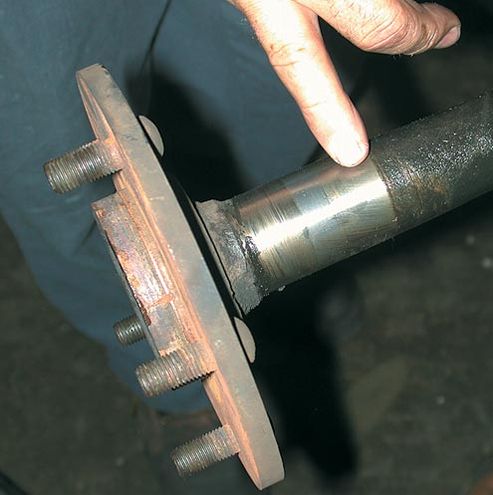
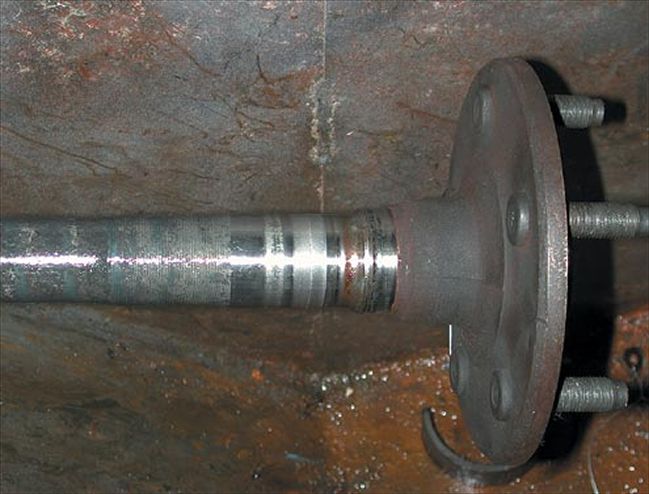
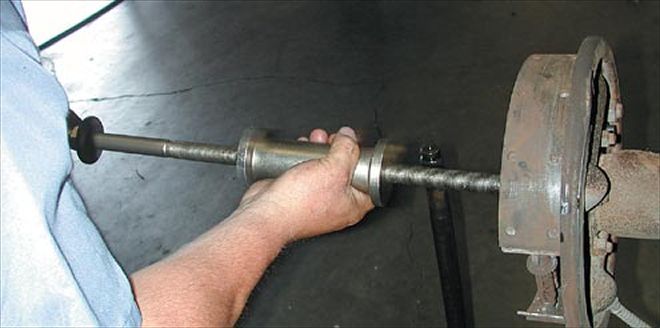
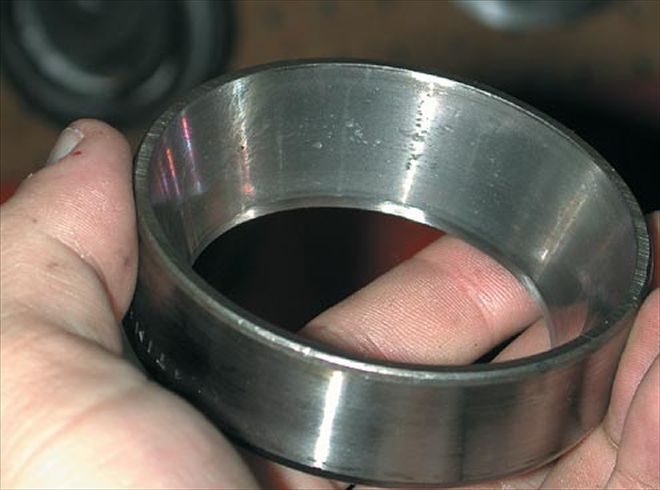
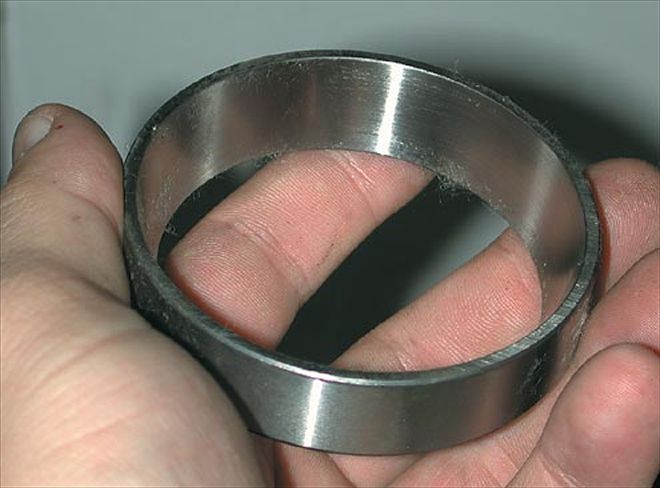
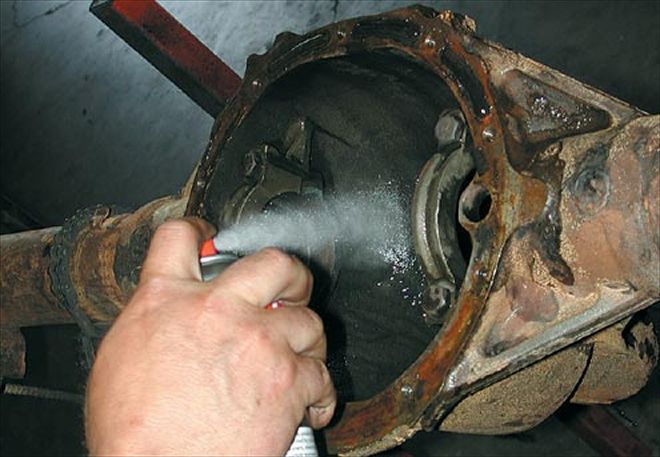
It’s important to understand the inner workings of the differential unit to get a feel for what goes bad in them. The big hunk o’ gears inside the rearend redirects power from the driveshaft to the wheels and as such is under an enormous amount of stress. The parts that are subject to wear include bearing journals, bearing races, axleshafts, spider gears, and the ring-and-pinion.
The function of the differential and gears dictates that they rub against each other under high pressure and load and have to maintain structural integrity. In other words, the components have to have immense torsional strength to resist twisting off and also must have surfaces capable of withstanding wear. To achieve this, the parts of the differential are hardened.
After the gears are cut and shaped, they are flash-hardened. This process leaves the inner portion of the gear metal relatively soft so it can resist and absorb torsional stress. The outer metal (about 1/64 inch thick) is hardened for good friction-wear characteristics. Over time, the outer hardened layer wears thin and the inner soft metal is exposed. When this happens, the gear faces are wearing on the soft inner metal which is not as resistant to friction. The result is increased temperatures due to friction and excessive gear wear. The symptom of a worn-out rearend is any unusual noise coming from the rear axles, such as grinding, whirring, or clacking. So pop the cover and start to look at things. We contacted Drivetrain Direct with our rearend dilemma. The chief mechanic, Martin, recommended that we bring a rearend unit in and he’d show us the rest. Drivetrain Direct is one of the industry leaders in rearend components and carries parts for any make and model truck. As Martin pulled apart the rearend, it became obvious to us what was wrong.